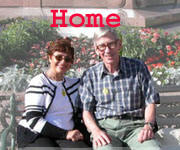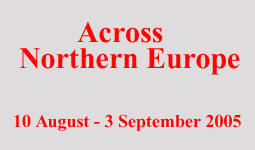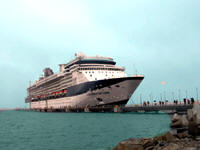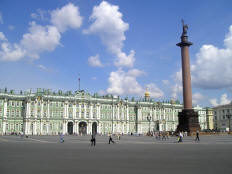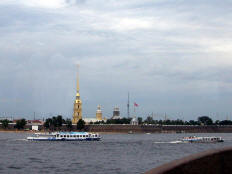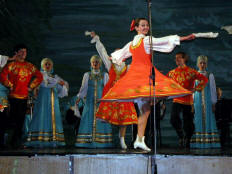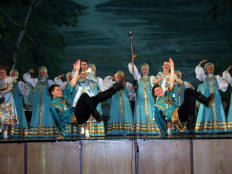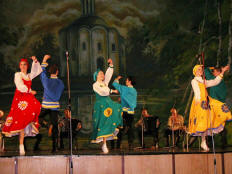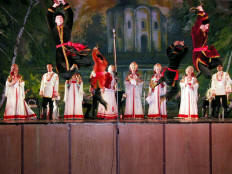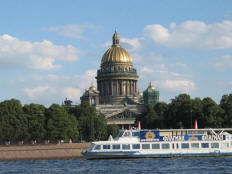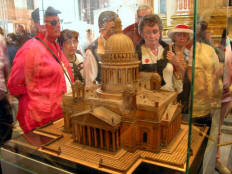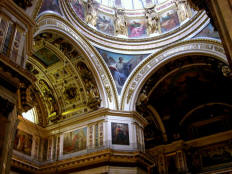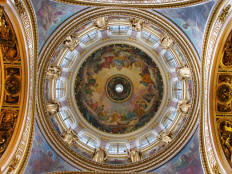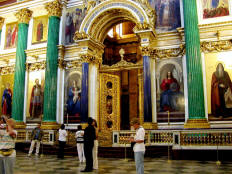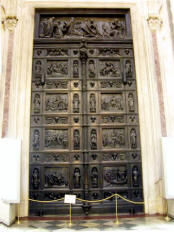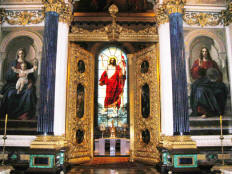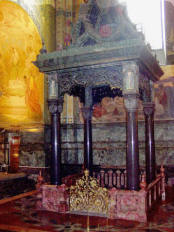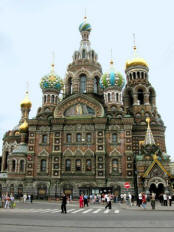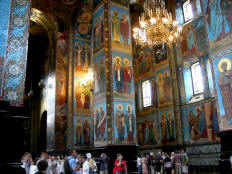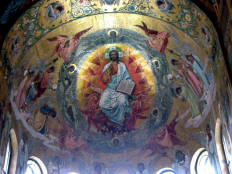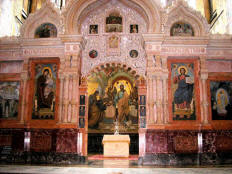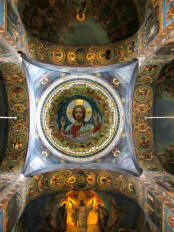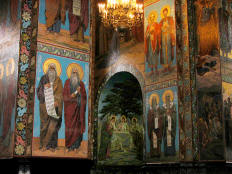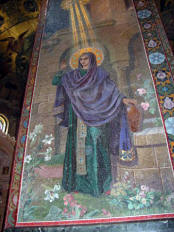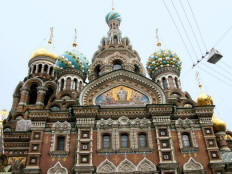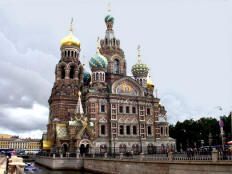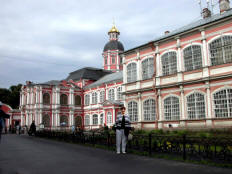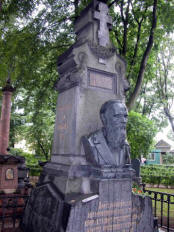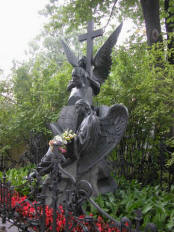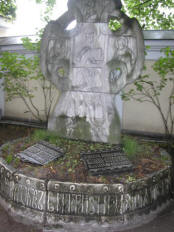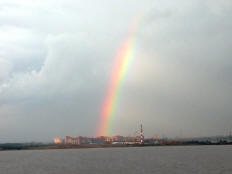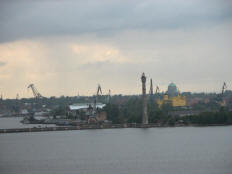Part II - Page 8 9 10 11 12 Go to: Part I Part III Part IV PART II Russia and the Baltic Countries (St. Petersburg, Tallinn, Riga & Klaipeda)
ST. PETERSBURG Saturday, 20 August. We were half way through the cruise. The ship arrived in St. Petersburg, Russia, at 7:00, but we slept late. We had spent three days in the city in 2002 (as part of a 14-day Russian river cruise), and most of the ship’s excursions visited places we’d already seen. We were glad for the opportunity to relax on board. After breakfast, Jane walked a mile on the 1/5 mile track while I ran two miles. Then she went to the spa on deck to use the thalassotherapy pool while I went to the gym. We had a light lunch and spent some time reading. We ate dinner early so we could catch the bus at 7:20 for the Russian Folkloric Show. On our way through the city, we passed the Hermitage and the Peter and Paul Fortress, among others.
The two-hour performance was delightful, if not entirely authentic. The program acknowledged that some of the traditional dances had been modified for a more modern audience. We were back at the ship about 10:00.
Sunday, 20 August. It was another beautiful day. We spent a leisurely morning on the ship. Jane went to the pool again, and I read my book. We had booked the 1:45 St. Petersburg Cathedrals tour, but we left the ship at 1:00 to give ourselves some time to browse the tourist shop on the pier. We could only do this when we were going to or returning from a shore excursion because we didn’t have visas. The shop was well stocked. We bought a lacquer box, a couple of matryoshka (nesting) dolls, and some post cards.
Each bus of our tour departed as it filled up, so we actually left early. Our bus tour took us first to St. Isaac’s Cathedral (1858). We had been here in 2002 but had not been able to go inside. That was the attraction of today’s tour. The Cathedral was fairly crowded inside. Before giving us 20 minutes on our own, our local guide led us around as she pointed out various features of special interest, beginning with a wooden scale model and the massive bronze doors. The entire interior was elaborately decorated with rich mosaics and paintings, and the huge dome was especially impressive. But the iconastasis (the icon wall that separates the altar from the rest of the church), with eight malachite and two lapis lazuli columns, was clearly the show-stopper. When used as a church (It’s now a museum), St. Isaac’s could accommodate 14,000 people.
As we entered the church, we were overwhelmed by the magnificent mosaics. Except for marble columns and decorations on the iconastasis (itself magnificent), the entire interior was covered with mosaics (more than 7,000 square meters of them!). I must have taken at least 50 pictures.
By now the weather was overcast again, and we had a sudden downpour. We rushed for the bus, but it was hard to find because it was one of more than a dozen in a long line.
Our next stop was the Alexander Nevsky Monastery. (Nevsky is the patron saint of the city, Nevsky Prospect its main street.) This complex contains the Church of the Annunciation, Trinity Cathedral, a Seminary, the Communion Building, and the Metropolitan House, as well as the famous Tikhvin Cemetery. The heavy rain had stopped, but there still was a light mist.
We visited the neo-classical Cathedral (1790) and saw Nevsky’s "golden" sarcophagus. (It looked tarnished.) But having just seen St. Isaac’s and the Church on the Spilled Blood, it was a disappointment. In fact, the entire complex was very run down and badly in need of restoration. Our guide then led us through Tikhvin Cemetery, burial place of many famous people. We saw the graves of Dostoevsky, Rimsky-Korsakov, Tchaikovsky, and Mussorgsky, among others.
Part II - Page 8 9 10 11 12 Go to: Part I Part III Part IV |
